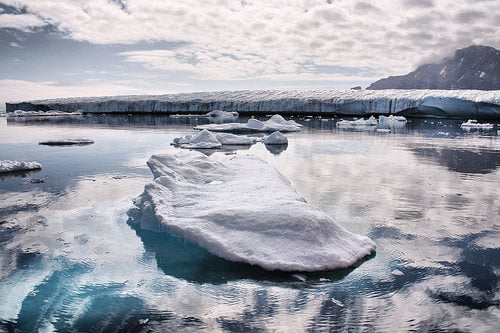

Features
Why is Arctic sea ice decreasing while Antarctic sea ice is not?
The Royal Society is seeking to create more informed conversations on climate change. As part of this the organisation has explained why Arctic sea ice is decreasing while Antarctic sea ice is not.
Why is Arctic sea ice decreasing while Antarctic sea ice is not?
Sea ice extent is affected by winds and ocean currents as well as temperature. Sea ice in the partly-enclosed Arctic Ocean seems to be responding directly to warming, while changes in winds and in the ocean seem to be dominating the patterns of climate and sea ice change in the ocean around Antarctica.
Sea ice in the Arctic has decreased dramatically since the late 1970s, particularly in summer and autumn. Since the satellite record began in 1978 (providing for the first time a complete and continuous areal coverage of the Arctic), the yearly minimum Arctic sea ice extent (which occurs in early to mid-September) has decreased by more than 40%. Ice cover expands again each Arctic winter but the ice is thinner than it used to be. Estimates of past sea ice extent suggest that this decline may be unprecedented in at least the past 1,450 years. The total volume of ice, the product of ice thickness and area, has decreased faster than ice extent over the past decades. Because sea ice is highly reflective, warming is amplified as the ice decreases and more sunshine is absorbed by the darker underlying ocean surface.
Sea ice in the Antarctic has shown a slight increase in extent since 1979 overall, although some areas, such as that to the west of the Antarctic Peninsula, have experienced a decrease. Changes in surface wind patterns around the continent have contributed to the Antarctic pattern of sea ice change while ocean factors such as the addition of cool fresh water from melting ice shelves may also have played a role. The wind changes include a recent strengthening of westerly winds, which reduces the amount of warm air from low latitudes penetrating into the southern high latitudes and alters the way in which ice moves away from the continent. The change in winds may result in part from the effects of stratospheric ozone depletion over Antarctica (i.e., the ozone hole, a phenomenon that is distinct from the human-driven changes in long-lived greenhouse gases discussed in this document). However, short-term trends in the Southern Ocean, such as those observed, can readily occur from natural variability of the atmosphere, ocean and sea ice system.
For more information from the Royal Society’s guide click here.
Photo: Christine Zenino via Flickr


 Environment10 months ago
Environment10 months agoAre Polymer Banknotes: an Eco-Friendly Trend or a Groundswell?

 Environment11 months ago
Environment11 months agoEco-Friendly Home Improvements: Top 7 Upgrades for 2025

 Features9 months ago
Features9 months agoEco-Friendly Cryptocurrencies: Sustainable Investment Choices

 Features10 months ago
Features10 months agoEco-Friendly Crypto Traders Must Find the Right Exchange



















